World War One And Ukraine
History matters.
In the month since the 100th anniversary of the assassination of Archduke Franz Ferdinand, I’ve noted the innumerable ways in which World War One continues to resonate with us today (see here, here, and here). It is, you might say, the indispensable war. The event without which the world as we’ve known it over the past century would not have unfolded as it did. No doubt, many of the same events — the collapse of the Austro-Hungarian, Ottoman, and Russian Empires in particular — likely would have happened in some way even if the armies of Europe hadn’t begun engaging in battle in August 1914. It’s even possible that, in some ways, the world might be a worse place without the events of World War One. Better or worse, though, it most assuredly would have been different, and one of the places that it would likely have been very different happens to be in one of the international flashpoints that we are dealing with today, Ukraine:
MOUNT MAKIVKA, Ukraine — In a conflict that cost millions of lives, destroyed four empires and introduced Europe to the horrors of chemical weapons and total war, the battle on a pine-covered mountain in what is today western Ukraine was a modest affair. A few hundred soldiers died, and the outcome was so muddled that all sides claimed victory.
For Ukrainians, however, the battle nearly a century ago was a singular event not only in World War I, but also in a longer conflict with Russia that rumbles on today at the eastern end of their country.
For it was at Makivka, according to a Ukrainian version of events that is celebrated in museum displays, monuments, patriotic songs and a recent movie, that Ukrainian soldiers achieved an extraordinary feat: They held their ground against the Russian Empire.
“Makivka was a turning point,” said Andriy Tkachik, a forest ranger in the mountainous area southwest of the city of Lviv who has set up a small private museum to display rusty rifles, bayonets and other war detritus dug up from the battlefield. “It showed we could fight.”
It was also early evidence of the divided loyalties, or at least the conflicting demands on those loyalties, that a century later cast a long shadow over Ukraine’s efforts to create a functioning and united state.
Their historic lands claimed by both the Russian czar and the Hapsburgs, Ukrainians fought on both sides of World War I. Some, like the 800 or so members of a unit called the Sich Sharpshooters that held off the Russians at Makivka in April 1915, served as volunteers for the Austro-Hungarian Empire of the Hapsburg dynasty, which had governed the western part of Ukraine since the late 18th century. An additional 250,000 served the Austrians as conscripts.
About 3.5 million Ukrainians, a vast majority of them conscripts, fought for the Russians, who controlled the central and eastern parts of what is now Ukraine.
Of the three powers that did most of the fighting on the eastern front during the war — czarist Russia on one side, the Austro-Hungarian Empire and the German Empire of Kaiser Wilhelm II on the other — none survived the cataclysm. For Ukraine, however, World War I delivered not only catastrophic suffering but also its first modern experience as an independent state. It was an experiment that lasted only a few months and was scarred by anarchy and infighting, but it laid the foundations for Ukraine today.
Without World War I,” said Oleh Pavlyshyn, a historian at the Ivan Franko National University of Lviv, “it would have been impossible to imagine that Ukraine would be a separate country.”
But the war, which Russia initially saw as a chance to unite within its empire all of its Slavic brethren in “Little Russia,” as it called Ukraine, also planted suspicions that poison Russia’s dealings with Ukraine to this day.
It left many Russians convinced that Ukrainian national sentiment and even the Ukrainian language, dismissed by czarist officials as a “Little Russian dialect,” were fictions invented by its enemies to undermine Russian rule. In Russia, the wartime exploits of Ukrainian troops at Makivka and other battles in the Carpathian Mountains are remembered, when they are mentioned at all, not as an example of Ukraine’s fighting spirit, but as evidence of the perils of division among Slavic peoples.
The rest of the history is, albeit briefly, set forth in the article. For a brief time while Russia was distracted by the post-revolution civil war, the western part of Ukraine enjoyed an independence that Ukrainians had never really known before. Much of the eastern part of the country, though, including those parts that are being fought over to this day, remained under Russian control. Eventually, the entire nation was subsumed into what became the Soviet Union and while Ukraine was granted “automony” of a sort as the Ukrainian Soviet Socialist Republic, it was in reality fully under the control of Moscow and its government was controlled by Communist apparatchuks. During this time, the Russians in Moscow did the best they could to stamp out the idea of Ukrainian nationalism that had taken hold during the war, to the point that they engaged in policies during the Stalinist era that led to the deaths of millions of Ukrainians in a genocide that has come to be known as the Holdomor, and which has largely been forgotten by history.
That spark of Ukrainian nationalism that was ignited in World War One managed to survive the Soviet era, though. Arguably, the repression from Moscow only served to enhance the Ukrainian’s sense of themselves as a nation separate from Russia, most especially in the western part of the nation that was most influenced by the Western world during the years of Austro-Hungarian rule and the brief period of independence after the war ended on the eastern front. At the same time, the ties to Russia that have always been a part of Ukrainian history and which were enhanced by its own experiences in the post-war/pre-Soviet era remained a powerful force in the eastern part of the country. This is the conflict we see playing out before us today, and the question that Ukraine as a nation will have to deal with going forward if it is to continue existing as a united nation.
Admittedly, none of what I am raising here is new information, but I think it brings up several points that ought to guide how we approach the ongoing crisis in Ukraine. For one thing, it’s important to recognize that the entire idea of Ukrainian national identity is a relatively new thing as far as European history is concerned. That isn’t meant to undermine the desires of Ukrainians to be free of rule from a distant ruler in Moscow, of course, but it is, I think, important to recognize that we are dealing with a phenomenon that is still new as far as Europe is concerned, and that there are competing influences at play in that part of the world. Additionally, it reminds us of the fact that the historical ties between Ukraine and Russia are far stronger than many people in the West seem to realize. As I’ve noted before, historically Ukraine is seen as the birthplace of what eventually became Russia, and to deny that fact would be to deny history. Finally, as always I remain convinced that it is essential to understand the historical roots of contemporary conflicts. We obviously cannot go back in time and change history, but denying the role that history has played in what is happening today is, as others have noted far more eloquently than I, the height of ignorance.
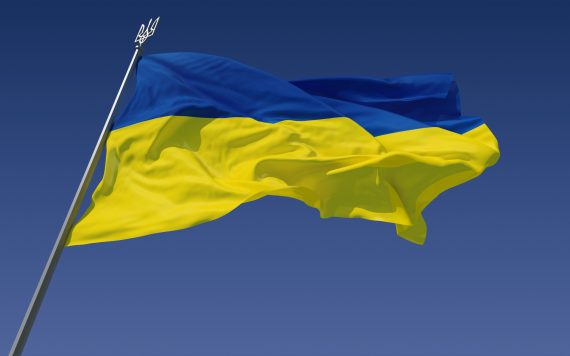

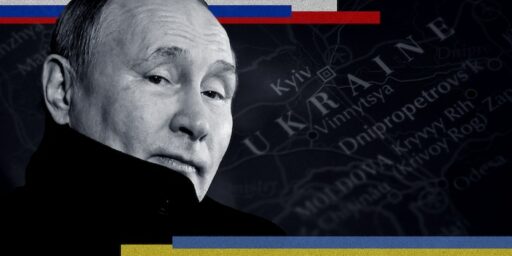
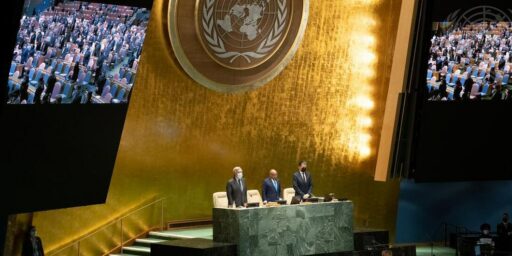
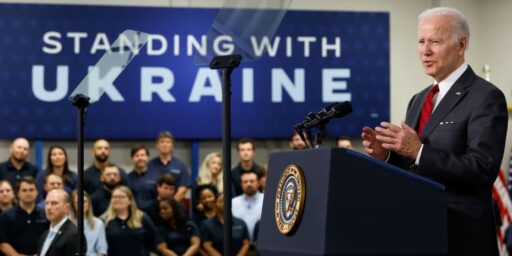
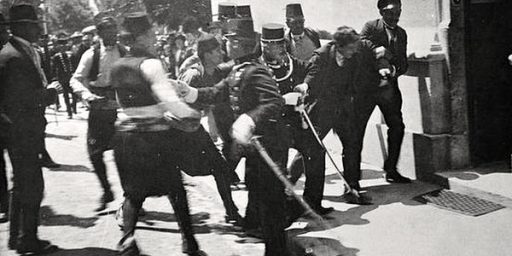
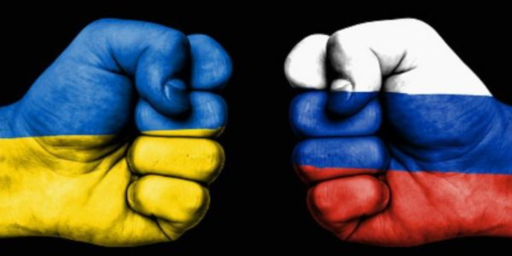
I think that what happened following WWI had more impact on the world today than the war itself. The draconian sanctions on Germany made the rise of Hitler possible.
And it all started with a disgruntled Bosnian Serb who decided to try to kill the heir to the throne of an empire that was going to die anyway
To make things even more complex, western Ukraine was part of Poland until World War2. Stalin’s USSR took it when he invaded Poland from the east in September 1939 in combination with Hitler invading from the west. Ukraine to a certain extent is no more a nation than Iraq, and that particular national project is not going all that well either.
Maybe we should just let Russia take east Ukraine and Poland take west Ukraine. The end result would be that a German-led EU gets west Ukraine-which is sort of what was contemplated by the Treaty of Brest-Litvosk concluded between Germany and Russia in 1917.
Looking even to WWI is to recent history to get a sense of the Central/Easter European concerns. In ‘Revenge of Geography’, Robert Kaplan shows how the whole area has been in flux for a millennia because there are few natural borders. This openness to invasion has fed the Russian paranoia. The Eastern Bloc states of the Soviet Union were simply a recapturing of the traditional buffer zone.
One would hope with modern transportation and armament that occupation would be less desirable and development of strong independent, modern states as a buffer between Germany and Russia would be the modern method, but historical memory dies hard. It may occur, eventually, Communism kept much of the world from becoming modern until very late in the 20th century. Even now, the forces are aligned against that modernity with efforts to impose socialistic ideology absolutism for religious absolutism and authoritarian absolutism, group identity replacing familial identity.
Highly interesting interpretation, especially as Lviv/Lwow/Lemberg and all of western Ukraine didn’t become Ukrainian until after WWII. But I guess everybody has to justify major land grabs as based on historical rights.
The Holodomor was shockingly evil and maybe Stalin’s greatest crime – half as many victims as the Holocaust, mostly done by deliberate starvation. Timothy Snyder’s “Bloodlands” goes into great detail on it. A very good, though very horrifying, book.
@Ron Beasley:
Some historians have come to a more positive view of the German settlement. It wasn’t really consistently enforced, for one thing, and it was mild compared to Germany’s treatment of Russia or of France in 1870. Its existence may have given Hitler leverage, but it didn’t make his rise inevitable.
The really problematic Versailles was not the European settlements, but the treatment of Africa, Asia, and the Middle East.
I suspect there’s a more recent history, the attempts to expand EU influence into the nations that surround Russia utterly without regard for how the Russians feel about that and WW2.
Had we, the US, not actively sought and funded a split from the free-trade situation between Russia and Ukraine they might have accepted it more easily. Right or wrong, the Russians have a problem with the US mucking around in the nations on their borders and within their set economic federation. We would too, were the situation reversed. This is an attack on the Russian economy, which I honestly see no reason we should wish to be doing,
The Ukraine can not have free trade with the EU and maintain the existing free-trade agreement which exempts them from the protectionist tariffs Russia imposes in order to protect their nascent capitalist economy. That arrangement is unworkable as it is a back-door route to un-tariffed goods flooding their markets. Just so happens the industries in the eastern part are tightly linked with Russia and so this is justifiably a most disconcerting change for them. In combination with the general lack of trust in the Kiev government (whose parliament disbanded in a series of brawls this week –which CNN doesn’t want to talk about…) and the lingering effects of the more recent WWII history of the remnants of the Hapsburger’s fighting for the Nazi’s and slaughtering Russian-Ukrainians (amazingly, they have statues which honor some of those vicious pricks in the western cities) I suspect the author’s assertion there is no will in the people to split completely away if need be isn’t a precise one.
Maybe it’s because you’re an old fart, Doug, and I’m, well, not, but I can’t see how 99 years is “relatively new.” Okay, sure, on a geological scale, but we’re talking about a century of Ukrainian national identity here. That’s a long time in human scales. That’s at least two generations, maybe three.
The Holomdor is the flashpoint that makes Western Ukrainian reaction to say a Russian invasion unpredictable. I mean its a seminal event for ethnic Ukrainians in the same way the Holocaust is for European Jews and yet because its so unknown outside of history and political science circles within the US and Western Europe we might misjudge how much Kiev is willing to give.